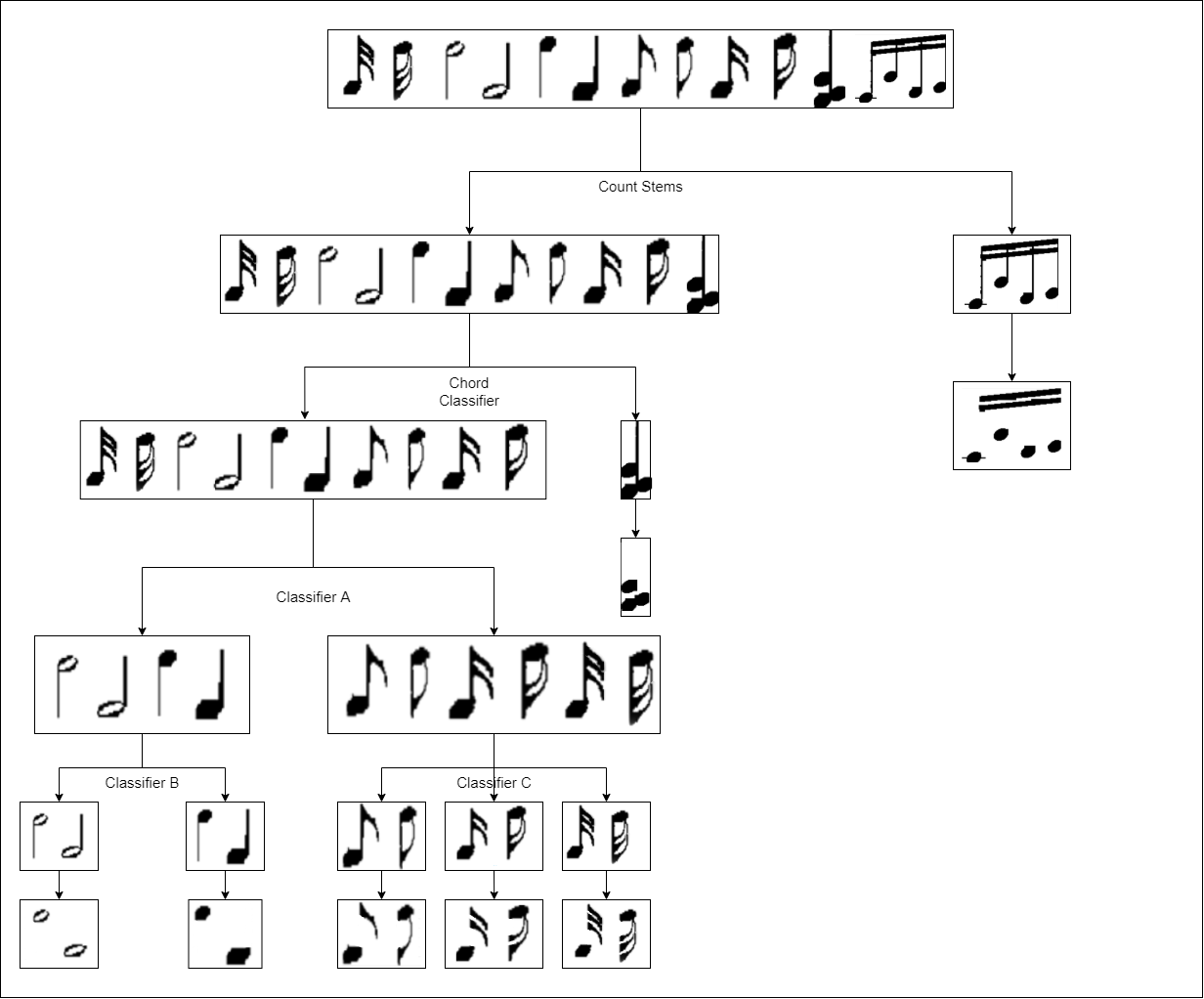- Introduction
- Assumptions
- Supported Symbols
- Pipeline
- Tools Used
- How to Run
- Useful Resources
- Contributers
- License
This project aims to convert music sheets into a machine-readable version. We take a simplified version as we support only main symbols where we convert an image of a music sheet to a textual representation that can be further processed to produce midi files or audio files like wav or mp3.
- input image should be a scanned music sheet.
- maximum ledgers supported are
twoabove the stafflines andtwobelow the stafflines. - each stave should start with a G clef.
- stem height is greater than or equal
3 * staffSpacing(vertical area between two lines). - note head height equals
staffSpacing. - output file is in GUIDO music notation.
Music sheets have a very vast variety of symbols making it hard to handle so for simplicity we handle only the symbols listed below.
we support
whole notes, half notes, quarter notes, eigth notes, sixteenth notes, thiry-second notes stemsUp or stemsDown.
we support different kinds of beams combining notes up to
thirty-second stemsUp or stemsDown.
we support all kinds of chords.
- Time signatures: we support only
4/2and4/4 - Accidentals: we support all kinds like
double sharp,sharp,flat,double flat,natural. - Augmentation dots
- clefs: we support only G clef.
-
The input image goes through a series of steps we first apply filters to remove noise like
Hyprid Median FilterandGaussian Filter -
We apply
RotationthenAdaptive Thresholdingis used to segment the image into symbols and background. -
We remove Stafflines to find the symbols in the image easier.
-
We clip the image to remove the brace connecting the staves if exists.
-
We partition the image into the composing staves and apply find contours on each stave and feed each symbol to the classifiers.
-
symbols are first fed into template matching using SIFT features to identify the following:
Double Sharp,Sharp,Flat,Double Flat,Natural,Whole Note,Time Signatures. -
if non of the previous symbols was identified we begin classification with our algorithmic approach after removing the stems using the following decision tree.

- Install conda
conda env create -f requirements.yml
conda activate OMReader
python3 main.py <input directory path> <output directory path>
Note: you can run it on windows but you should ignore creating environment with the command previously mentioned and you need to have anaconda and opencv installed.
- Licensed under the MIT License.





